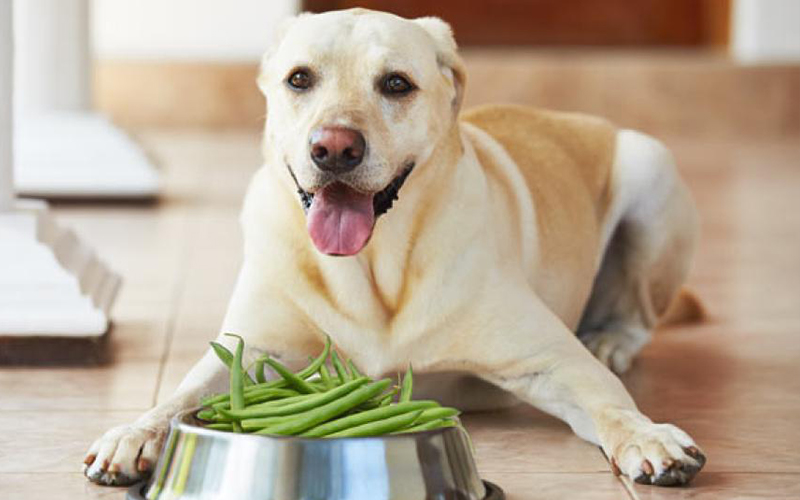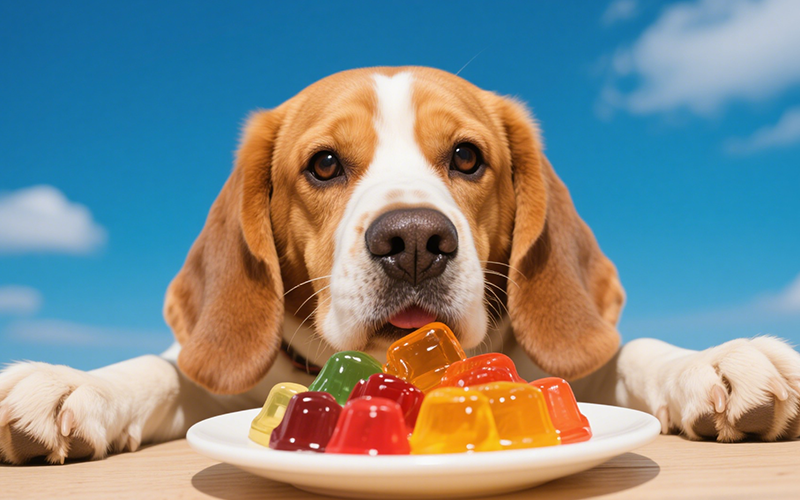Can Dogs Eat Green Beans? A Guide to Green Beans and Your Dog’s Health
- 19 Feb 2025 11:13
Green beans are a nutritious, low-calorie vegetable that many people enjoy as part of their meals. But when it comes to your dog, you may be wondering, can dogs eat green beans? The good news is that yes, green beans are safe for dogs and can be a healthy snack option in moderation. They offer several health benefits but should be given in a way that ensures your dog’s well-being. Let’s dive into everything you need to know about feeding green beans to your dog.

Are Green Beans Safe for Dogs?
Green beans are non-toxic to dogs, making them a safe food to incorporate into their diet. They are often recommended as a healthy treat for dogs, especially for those who are overweight or need to watch their calorie intake. However, while green beans are safe, it’s important to follow a few basic guidelines to ensure they’re served appropriately.
Benefits of Green Beans for Dogs
Low in Calories: Green beans are an excellent low-calorie treat, making them ideal for dogs that are on a diet or need to maintain a healthy weight. Their high fiber content helps your dog feel full without adding extra calories.
Rich in Nutrients: Green beans are packed with vitamins and minerals, including vitamin A, vitamin C, vitamin K, and folate. These nutrients are essential for maintaining your dog’s immune system, skin health, and bone health.
High in Fiber: Green beans are an excellent source of fiber, which can help with digestion and keep your dog’s digestive system running smoothly. Fiber can also aid in weight management by promoting feelings of fullness.
Antioxidants: Green beans contain antioxidants that help protect your dog’s cells from damage and reduce inflammation. These antioxidants also support your dog’s overall health and immune function.
Hydration: Green beans have a high water content, which can help keep your dog hydrated, especially during warmer months.
How to Safely Offer Green Beans to Your Dog
While green beans are generally safe, there are a few important things to keep in mind when offering them to your dog:
Serve Cooked, Not Raw: While some dogs can tolerate raw green beans, it’s usually better to cook them lightly to make them easier to digest. Steaming or boiling the green beans without adding salt, butter, or seasonings is the best option. Avoid any seasonings like garlic, onion, or salt, as these can be harmful to dogs.
Cut into Small Pieces: To prevent any choking hazards, especially for smaller dogs, it’s best to cut green beans into small, bite-sized pieces. This makes it easier for your dog to chew and digest them.
Avoid Canned Green Beans: Canned green beans often contain added salt and preservatives, which are not good for dogs. If you’re giving your dog green beans from a can, be sure to rinse them thoroughly to remove any excess sodium.
Moderation Is Key: Green beans should be an occasional treat and not a regular part of your dog’s diet. While they’re healthy, too many green beans can cause digestive upset due to their fiber content. Stick to offering them in small amounts.
Introduce Gradually: If it’s your dog’s first time having green beans, introduce them slowly and monitor your dog for any signs of digestive upset such as vomiting or diarrhea. Some dogs may be sensitive to fiber, so it’s always good to start small.
Risks of Green Beans for Dogs
While green beans are a healthy and safe snack for most dogs, there are a few risks to be aware of:
Too Much Fiber: Green beans are high in fiber, which is generally good for digestion, but too much fiber can cause gas, bloating, or diarrhea in dogs. Make sure to serve them in moderation to avoid digestive issues.
Choking Hazard: For smaller dogs or dogs that tend to eat quickly, whole green beans or large pieces can pose a choking hazard. Always cut the green beans into smaller pieces to prevent this risk.
Canned Green Beans: Canned green beans can contain high amounts of sodium and preservatives, which are unhealthy for dogs. Excess salt can lead to dehydration and sodium toxicity in dogs, which can cause serious health issues. Always opt for fresh or frozen green beans over canned varieties.
Seasonings and Additives: Never give your dog green beans that are seasoned with garlic, onion, butter, or any artificial additives, as these ingredients can be harmful to your dog’s health. Garlic and onions, for example, are toxic to dogs and can cause serious health problems.
Signs of Digestive Upset in Dogs
If your dog eats too many green beans or has a sensitivity to them, you may notice the following symptoms of digestive upset:
Vomiting
Diarrhea
Excessive gas or bloating
Stomach discomfort
If any of these symptoms occur after feeding your dog green beans, reduce or eliminate them from their diet and consult your vet if the symptoms persist.
Healthier Treat Alternatives to Green Beans for Dogs
If you’re looking for other healthy treat options, here are some alternatives to green beans that are also safe and nutritious for dogs:
Carrots: Carrots are low in calories, rich in fiber, and help support good dental health with their crunchy texture.
Sweet Potatoes: Cooked sweet potatoes are high in fiber and essential vitamins like vitamin A and C, and they’re gentle on your dog’s stomach.
Blueberries: Blueberries are antioxidant-rich, low in calories, and make for an excellent small-sized treat.
Apples: Make sure to remove the seeds and core, and apples are a great source of fiber and vitamins.
Cucumbers: Hydrating and low-calorie, cucumbers are a refreshing snack for dogs.
What to Do If Your Dog Eats Too Many Green Beans
If your dog consumes too many green beans or shows signs of digestive upset, here’s what you should do:
Monitor for Symptoms: Keep an eye on your dog for any signs of vomiting, diarrhea, bloating, or stomach discomfort.
Provide Fresh Water: Make sure your dog has access to fresh water to help with digestion and hydration.
Consult Your Vet: If symptoms persist or if your dog seems unwell, contact your vet for advice on how to proceed.
Conclusion
Can dogs eat green beans? Yes, green beans are a safe, low-calorie, and nutritious treat for most dogs when given in moderation. They can offer health benefits such as vitamins, fiber, and antioxidants. Just be sure to serve them cooked, cut into small pieces, and avoid seasonings or canned varieties with added salt. If your dog is new to green beans, introduce them slowly and monitor their reaction.
If you’re ever unsure about your dog’s diet or need more information on safe food options, PettureX is here to help. PettureX offers 24/7 online consultations, providing expert advice on your dog’s nutrition and health. Keep your dog healthy and happy with the assistance of PettureX!
Related

Can Dogs Eat Peaches? Vet Explains Benefits, Cyanide Risks & Safe Serving
- 16 Apr 2025
Can Dogs Eat Mulberries? Vet Explains Safety, Benefits & Potential Risks
- 16 Apr 2025
Can Dogs Eat Mozzarella? Vet Explains the Cheesy Truth (Risks & Benefits)
- 16 Apr 2025
Can Dogs Eat Mango Skin? Vet Explains Why It's a Risky Chew!
- 16 Apr 2025
Can Dogs Eat Maple Syrup? The Sugary Truth & Why Vets Advise Against It
- 16 Apr 2025
Can Dogs Eat Mac n Cheese? Vet Explains Why This Comfort Food Is Unsafe!
- 16 Apr 2025
Can Dogs Eat Liver? Vet Guide to This Nutrient-Dense Organ Meat (Benefits & Risks!)
- 16 Apr 2025
Can Dogs Eat Licorice? The Sweet Danger & Glycyrrhizin Risk Explained by Vets
- 16 Apr 2025
Can Dogs Eat Lamb? Vet Insights on This Nutritious Meat Option
- 16 Apr 2025
Can Dogs Eat Jelly? The Sweet Truth About Sugar, Xylitol & Why Vets Say No!
- 16 Apr 2025
